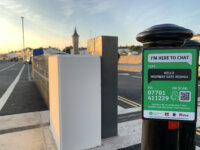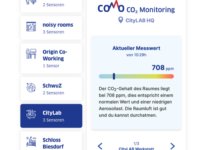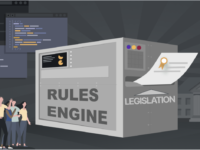MedeINN arose from the need to innovate in the government sector, in a city that had been developing its innovation capabilities in all other sectors. For this reason, and under Innovative State premise, we seek to connect the Mayor's Office of Medellín´s challenges with entrepreneurs and researchers capacities. This has been achieved after a redesign of a Public Procurement for Innovation methodology, which enables Open Innovation in the government sector.
Innovation Tag: Internet of Things (IoT)
The Environment Agency has a responsibility to protect communities from flood and coastal risks. In the past, the agency has struggled to scale their public engagement and reach their diverse audiences, while also retaining a local relevance. Hello Lamp Post was brought on to provide an interactive, live 24/7 conversational channel to educate and inform the public on flood safety, in high-risk locations around the South West of England and Newcastle.
The Smart Station project for future urban subway station has accelerated the digital transformation for public transportation industry, which has been slow to change, by applying fourth industrial technologies such as IoT, 3D digital twin technology, AI image analysis, and deep learning technology. Through this, the station has secured a control tower that can manage all lines for safe subway station operation, station workers can innovate their work through augmented reality UI systems.
In COMo, the CO2 concentration (CO2 = Carbon Dioxide) serves as a measure for indoor air quality and aerosol pollution; the latter correlates with the potential (COVID) viral load. Objective CO2 readings via networked sensors enable operators to control the indoor air quality and thus reduce the risk of infection for visitors. Published data allow visitors to make decisions about visiting the facility.
All content is available under open source licenses (MIT, BSD, Creative Commons).
The Australian Government - Dept of Finance sponsored a Proof of Concept (PoC) that looked at how Rules as Code (RaC) might be provided as a shared utility that can be used to deliver simpler, personalised digital user journeys for citizens. RaC is the process of taking legislation and regulations and turning them into machine-readable code. It provides many benefits to citizens and government, including greater reuse, less duplication, greater transparency and accessibility of rules.
The $800B events industry is antiquated. Huge gaps exist between cities and events. EQ is a mobile platform that streamlines traffic, navigation, crowd control, and security in real time around crowded environments while collecting critical data and analytics. Vasta will soon unveil this next-generation suite of event and venue planning services and digital simulation platform. The EQ Platform was made for cities of any size; public safety; citizens/visitors; fans/non-fans; and for organizers.
Koldchain is the world's lowest-cost, patent-pending, GAVI-endorsed, solution based on thermosensitive polymers that leave distinct patterns upon exposure to temperature shifts. These patterns are interpreted by our smartphone algorithm to detect whether temperature fluctuations have damaged vaccines or other sensitive maternal health biotech products, and thus prevent infant & maternal mortality. The same tech applies to dairy, meat, and many other products where temperature affects quality.
Electric Vehicle (EV) charging infrastructure - a vital component of London’s smart and green agenda - is being delivered by a wide range of public and private bodies across London (up to 50).
As a result of the project, we developed a dashboard to join up the EV Charging infrastructure in London to enable a collective understanding of what is already in place, how it is being used, and to guide future installations.
The Reducing Friction in Trade (RFIT) project was initiated in March 2019 as a proof of concept to establish how blockchain distributed ledger technology and associated technologies can be used to seamlessly integrate supply chain data with HM Revenue & Customs and the Food Standards Agency’s systems. The project intends to do so by guaranteeing the timeliness and provenance of critical data and avoiding the need for discrete declarations.
With the introduction of 5G, global attention on electromagnetic field (EMF) safety has greatly increased. As such, the “IoT-based, unmanned remote EMF measuring equipment” has been developed steadily to measure EMF 24/7/365 while extending EMF measurement to the entire living environment. An “EMF monitoring system” has also been deployed to manage EMF in real time. In so doing, the system has contributed to the building of an EMF-free country while relieving public anxiety over EMF.








